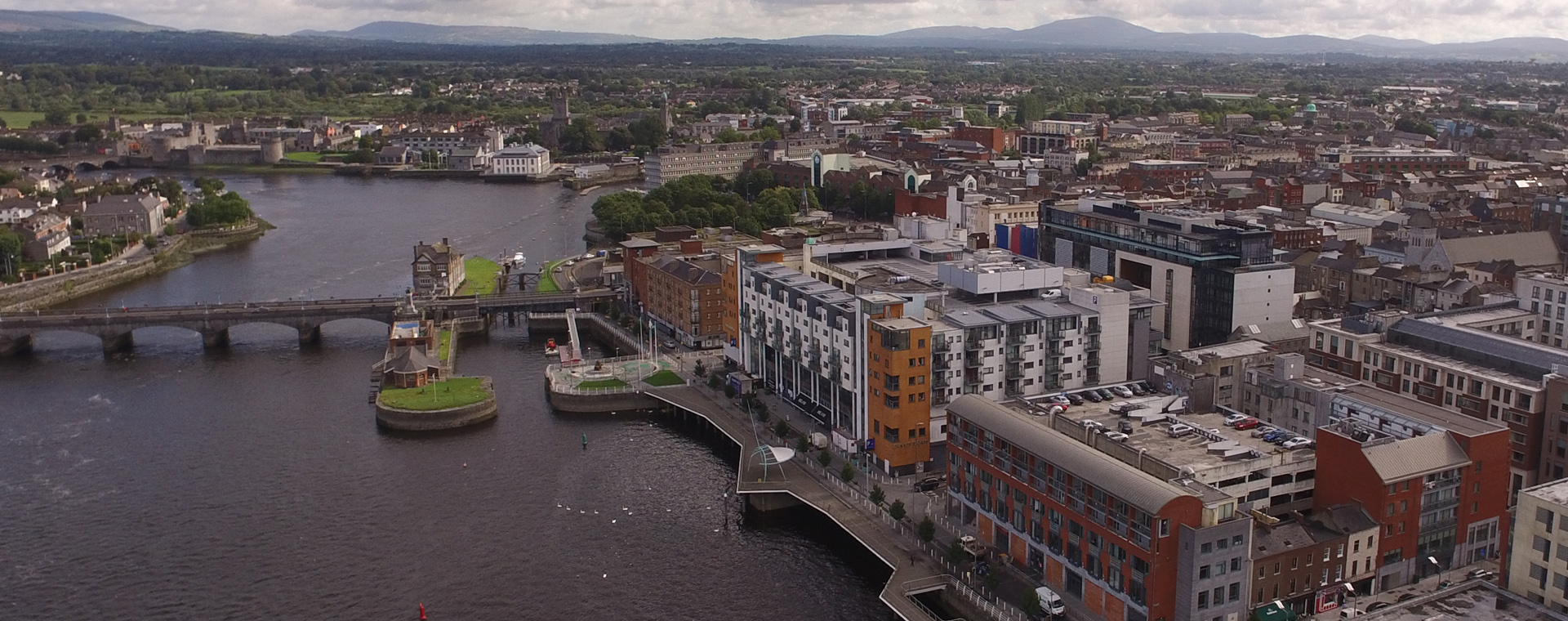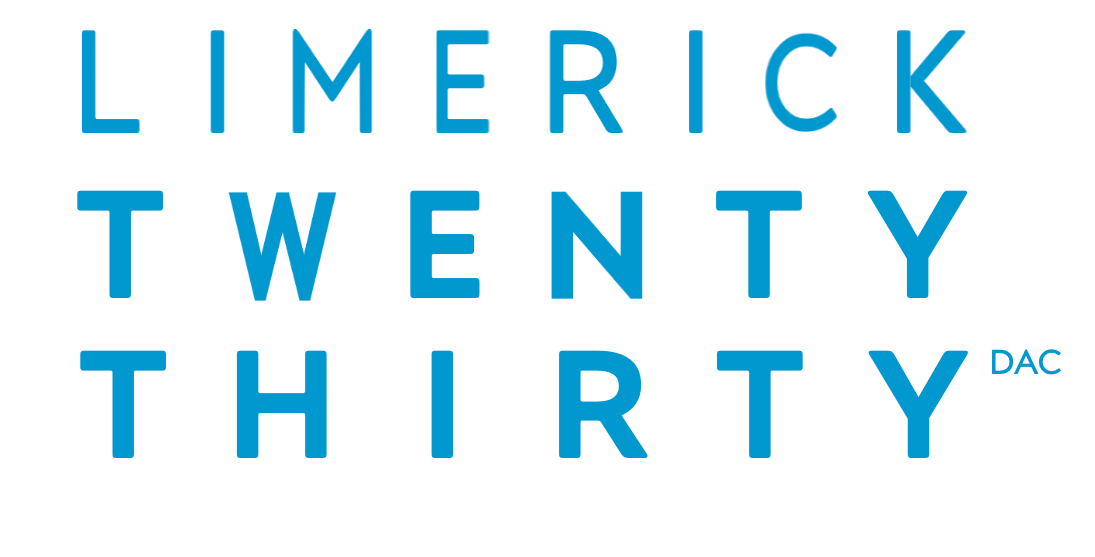How it Began

Limerick Twenty Thirty DAC was established in 2016 as an output of the ‘Limerick 2030 Plan’ which was launched in 2013 by Limerick City and County Council.
Limerick is investing over €1 billion in enterprise and investment infrastructure as part of the ‘Limerick 2030 Vision: An Economic and Spatial Plan for Limerick’, a 20 year action plan, which aims to transform Limerick through the economic, social and physical renaissance of Limerick City Centre and the wider Mid-West Region.
The ‘Limerick 2030 Plan’ is an economic and spatial framework for the redevelopment and growth of Limerick City Centre that was published in 2013. The review and update analyses the progress of the plan over the first seven years and updates the plan with new targets and recommendations to take the city and county to 2030.
Limerick Twenty Thirty DAC was a direct output of this plan, a property development company set up to manage the development of a number of strategic sites identified within the Plan. These sites will revitalise the City Centre and raise the quality of development.
This updated plan, which was adopted in June 2022, builds on the original objectives and project ambitions. The focus of this document is to complement the original plan’s emphasis on transformational sites and projects, as well as capturing emerging projects and opportunity areas.
Considerable progress has been made since the Plan was launched in 2013, with over 20,300 new jobs announced. Over the period to 2030, there is potential for up to 30,000 jobs to be created in the city and its suburbs and up to 12,500 jobs could be created in the county.
Download the Limerick 2030 Vision: An Economic and Spatial Plan for Limerick here.
Download the Interim Review and Update of the Limerick 2030 Plan here, and the Irish version here.
The Interim Review and Update of the Limerick 2030 Plan, sets out a framework that integrates economic development with spatial planning underpinned by dedicated bespoke marketing. It is a rallying call for public sector action and private sector investment until 2030.
The strategy also provides a wider thematic enabling and supporting framework to support the original Plan’s baseline ambitions. A number of strategic development opportunities have been identified including at Cleeves Riverside Quarter, Colbert Quarter, Georgian Neighbourhood, Project Opera Square, Arthurs Quay, UL City Centre campus, Debenham’s/ Penny’s Quarter, City Side Docklands, Clare Street, Revenue Commissioners’ building, business parks in Newcastle West and Kilmallock.
The Limerick Twenty Thirty team’s sites include Cleeves Riverside Quarter, Opera Square, Gardens International and previously Troy Studios.
Click here for more information in relation to Limerick Twenty Thirty’s specific projects.
Limerick Twenty Thirty DAC was established in 2016 as an output of the ‘Limerick 2030 Plan’ which was launched in 2013 by Limerick City and County Council.
Limerick is investing over €1 billion in enterprise and investment infrastructure as part of the ‘Limerick 2030 Vision: An Economic and Spatial Plan for Limerick’, a 20 year action plan, which aims to transform Limerick through the economic, social and physical renaissance of Limerick City Centre and the wider Mid-West Region.
The ‘Limerick 2030 Plan’ is an economic and spatial framework for the redevelopment and growth of Limerick City Centre that was published in 2013. The review and update analyses the progress of the plan over the first seven years and updates the plan with new targets and recommendations to take the city and county to 2030.
Limerick Twenty Thirty DAC was a direct output of this plan, a property development company set up to manage the development of a number of strategic sites identified within the Plan. These sites will revitalise the City Centre and raise the quality of development.
This updated plan, which was adopted in June 2022, builds on the original objectives and project ambitions. The focus of this document is to complement the original plan’s emphasis on transformational sites and projects, as well as capturing emerging projects and opportunity areas.
Considerable progress has been made since the Plan was launched in 2013, with over 20,300 new jobs announced. Over the period to 2030, there is potential for up to 30,000 jobs to be created in the city and its suburbs and up to 12,500 jobs could be created in the county.
Download the Limerick 2030 Vision: An Economic and Spatial Plan for Limerick here.
Download the Interim Review and Update of the Limerick 2030 Plan here.
The Interim Review and Update of the Limerick 2030 Plan, sets out a framework that integrates economic development with spatial planning underpinned by dedicated bespoke marketing. It is a rallying call for public sector action and private sector investment until 2030.
The strategy also provides a wider thematic enabling and supporting framework to support the original Plan’s baseline ambitions. A number of strategic development opportunities have been identified including at Cleeves Riverside Quarter, Colbert Quarter, Georgian Neighbourhood, Project Opera Square, Arthurs Quay, UL City Centre campus, Debenham’s/ Penny’s Quarter, City Side Docklands, Clare Street, Revenue Commissioners’ building, business parks in Newcastle West and Kilmallock.
The Limerick Twenty Thirty team’s sites include Cleeves Riverside Quarter, Opera Square, Gardens International and previously Troy Studios.
Click here for more information in relation to Limerick Twenty Thirty’s specific projects.
